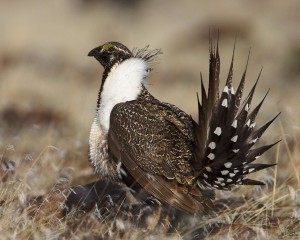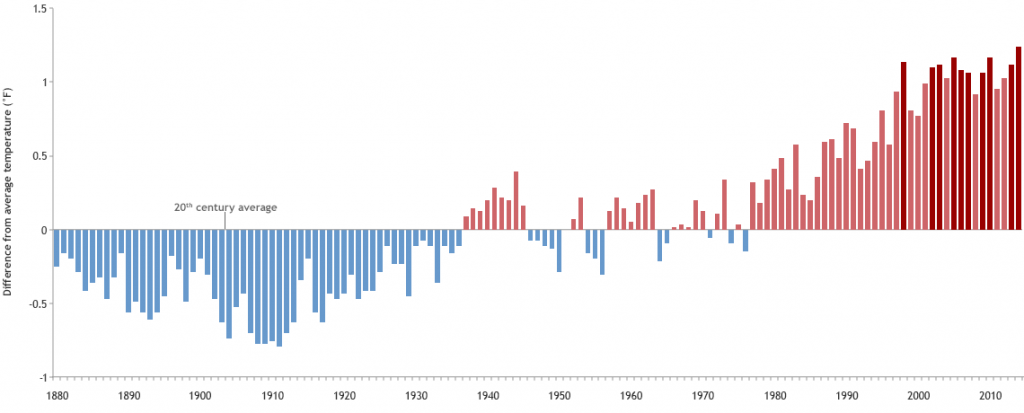Greater Sage Grouse, male
Photo by USFWS Pacific Southwest Region Photostream
Sage-Grouse are an iconic bird of the west evoking images of wild prairies. Their mating dance is among the most unique in the animal kingdom. Living in open sagebrush plains, the Greater Sage-Grouse (Centrocercus urophasianus) is the largest grouse species in North America.
Greater Sage-Grouse are notable for elaborate courtship rituals. Each spring males congregate in leks to perform a “strutting display” that sounds like a coffee percolator. Females observe these displays and select the most attractive males. Females make nests on the ground at the base of a sagebrush plant or grass patch. After her clutch of 6-13 eggs hatches, the young are immediately able to follow her.
Greater Sage-Grouse are totally dependent on sagebrush-dominated habitats where they forage on the ground. Lacking a muscular crop they are unable to digest hard seeds like other grouse. Sagebrush is a crucial component of their diet year-round, with leaves, buds, stems, flowers and fruit, as well as insects, the primary food of the Greater Sage-Grouse.
Currently, Greater Sage-Grouse occupy approximately 56 percent of their historical range in the western U.S. They were never native to Kansas. Evidence suggests that habitat fragmentation and destruction has contributed to significant population declines over the past century. If current trends persist, many populations may disappear in several decades, with remaining fragmented populations vulnerable to extinction. The Fish and Wildlife Service has concluded that the Greater Sage-Grouse warrants protection under the Endangered Species Act but is precluded since the needs of other species facing more immediate and severe threat of extinction take priority. Greater Sage-Grouse live in wilderness areas of western states that are also home to mule deer, elk and pronghorn antelope. We need to protect Sage-Grouse habitat from irresponsible off-road vehicle use, damaging drilling, mining, transmission and other energy development activities.



